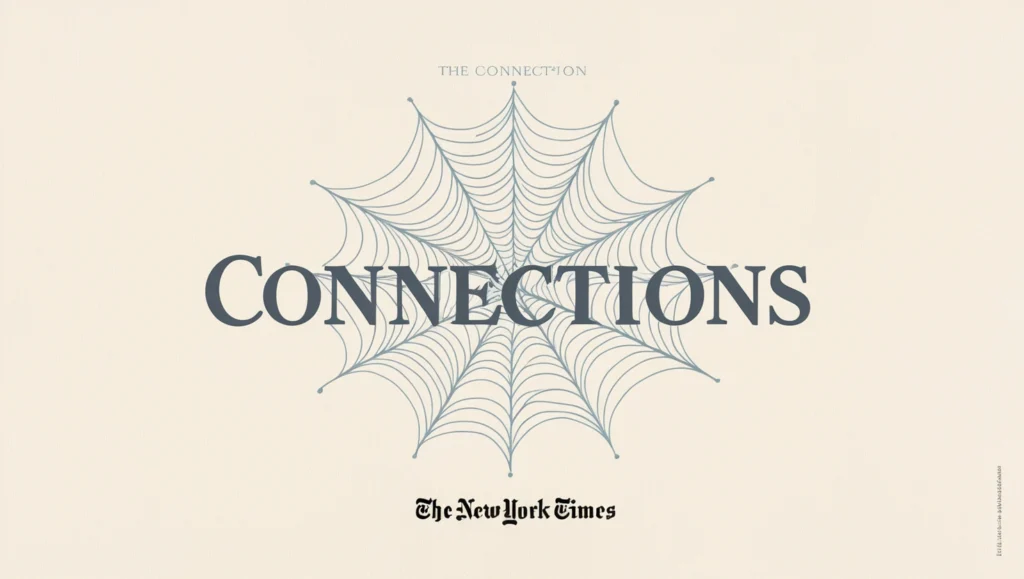The New York Times (NYT) is known for producing a wide variety of engaging puzzles and word games. Among these, the NYT ‘Connections’ puzzle has gained a significant following. The goal of the game is to identify connections among words, phrases, or ideas to form coherent sets. Many players find it a fun challenge, but sometimes a little extra help is needed to navigate the trickier parts. That’s where our comprehensive guide comes in, providing the most valuable NYT connections hint to assist you in solving even the most complex puzzles.
What Makes NYT ‘Connections’ So Popular?
The NYT ‘Connections’ game stands out due to its unique ability to combine wordplay with logical thinking. It requires players to think beyond simple definitions and meanings, pushing them to make abstract connections between words and concepts. This aspect makes it highly engaging and educational, offering players a chance to improve their vocabulary and critical thinking skills.
How to Play NYT ‘Connections’ Effectively
Understanding the game mechanics is crucial to becoming proficient at NYT ‘Connections.’ Here’s a quick breakdown of how you can approach each challenge:
- Identify Themes: Start by looking for overarching themes among the words presented. Identifying a central idea can help you spot connections more easily.
- Group by Similarity: Find words that share a similar meaning, function, or characteristic. This step can significantly narrow down your options.
- Eliminate Outliers: If certain words don’t seem to fit into any group, set them aside temporarily. These outliers often become clearer once other connections are established.
By following these steps, you can maximize your efficiency in solving the puzzles. Now, let’s dive deeper into the strategies that can make you a master of NYT ‘Connections’.
Proven Strategies for Solving NYT ‘Connections’ Puzzles
1. Start with the Obvious Connections
Begin by identifying any obvious connections between words. These could be synonyms, antonyms, or words that belong to the same category (e.g., colors, animals, emotions). Recognizing these clear connections helps in building momentum and confidence.
2. Look for Hidden Patterns
The NYT ‘Connections’ game often hides subtle patterns within its puzzles. Pay close attention to word structure, prefixes, suffixes, and common linguistic roots. Words that seem unrelated might share an etymological link, providing the key to unlocking a connection.
3. Use Process of Elimination
If you’re stuck, employ the process of elimination to narrow down your choices. Remove words that clearly do not fit a certain category, and focus on those that might have potential connections. This technique is especially helpful when dealing with larger sets of words.
4. Consider Multiple Meanings
Words in NYT ‘Connections’ puzzles often have multiple meanings. For example, the word “bank” could refer to a financial institution or the side of a river. Always be open to the possibility that a word might belong to more than one category, depending on its context.
5. Use Online Resources for Assistance
If you’re struggling to make progress, don’t hesitate to use online dictionaries, thesauruses, or NYT ‘connections hint websites. These resources can provide you with valuable insights, especially when dealing with unfamiliar terms or phrases.
Common Themes in NYT ‘Connections’ Puzzles
Having an understanding of frequently recurring themes can give you an edge. Here are some of the most common categories you’ll encounter:
- Synonyms & Antonyms: Words with similar or opposite meanings.
- Homophones & Homographs: Words that sound alike or have the same spelling but different meanings.
- Categories: Groups like colors, fruits, animals, or professions.
- Wordplay: Puns, idioms, or phrases that require lateral thinking.
By familiarizing yourself with these themes, you can more quickly identify connections and solve puzzles efficiently.
Advanced Tips to Enhance Your Puzzle-Solving Skills
1. Expand Your Vocabulary
One of the most effective ways to improve at NYT ‘Connections’ is by expanding your vocabulary. The more words you know, the easier it will be to identify connections. Consider reading a diverse range of materials, from novels to scientific journals, to broaden your vocabulary.
2. Practice Regularly
Consistency is key to becoming proficient at NYT ‘Connections.’ Make it a habit to solve a few puzzles every day. Over time, you’ll notice improvements in your ability to recognize patterns and connections.
3. Join Online Communities
Engaging with online communities dedicated to NYT puzzles can be incredibly beneficial. These forums allow you to discuss strategies, share hints, and gain insights from other experienced players. Consider joining a platform like Reddit or Discord where puzzle enthusiasts gather.
Why NYT ‘Connections’ Is More Than Just a Game
The beauty of NYT ‘Connections’ lies in its ability to serve as both a fun pastime and a cognitive exercise. By challenging players to think creatively and make connections between seemingly unrelated concepts, it offers numerous benefits:
- Enhances Problem-Solving Skills: Regularly playing NYT ‘Connections’ can improve your ability to tackle complex problems, both in the game and in real-life situations.
- Boosts Vocabulary: Engaging with a wide array of words and phrases helps you learn new terms and reinforces your existing knowledge.
- Improves Memory: By repeatedly connecting words and concepts, you strengthen your memory and cognitive recall abilities.
The Evolution of NYT ‘Connections’
The popularity of NYT ‘Connections’ has grown rapidly over time, reflecting a broader trend toward word puzzles and logic games. Its success can be attributed to its blend of simplicity and complexity, making it accessible to newcomers while still challenging experienced players.
NYT ‘Connections’ vs. Other Word Puzzles
NYT ‘Connections’ differs from other word games like crosswords or word searches by focusing on the relationships between words rather than their individual meanings. This emphasis on connections creates a unique experience that sets it apart from more traditional puzzles.
Conclusion
NYT ‘Connections’ offers an intellectually stimulating and rewarding experience for puzzle enthusiasts. By implementing the strategies and tips outlined in this guide, you’ll be well-equipped to tackle even the most challenging puzzles with ease. As you continue to practice, you’ll find yourself becoming more adept at identifying connections and solving puzzles faster.



